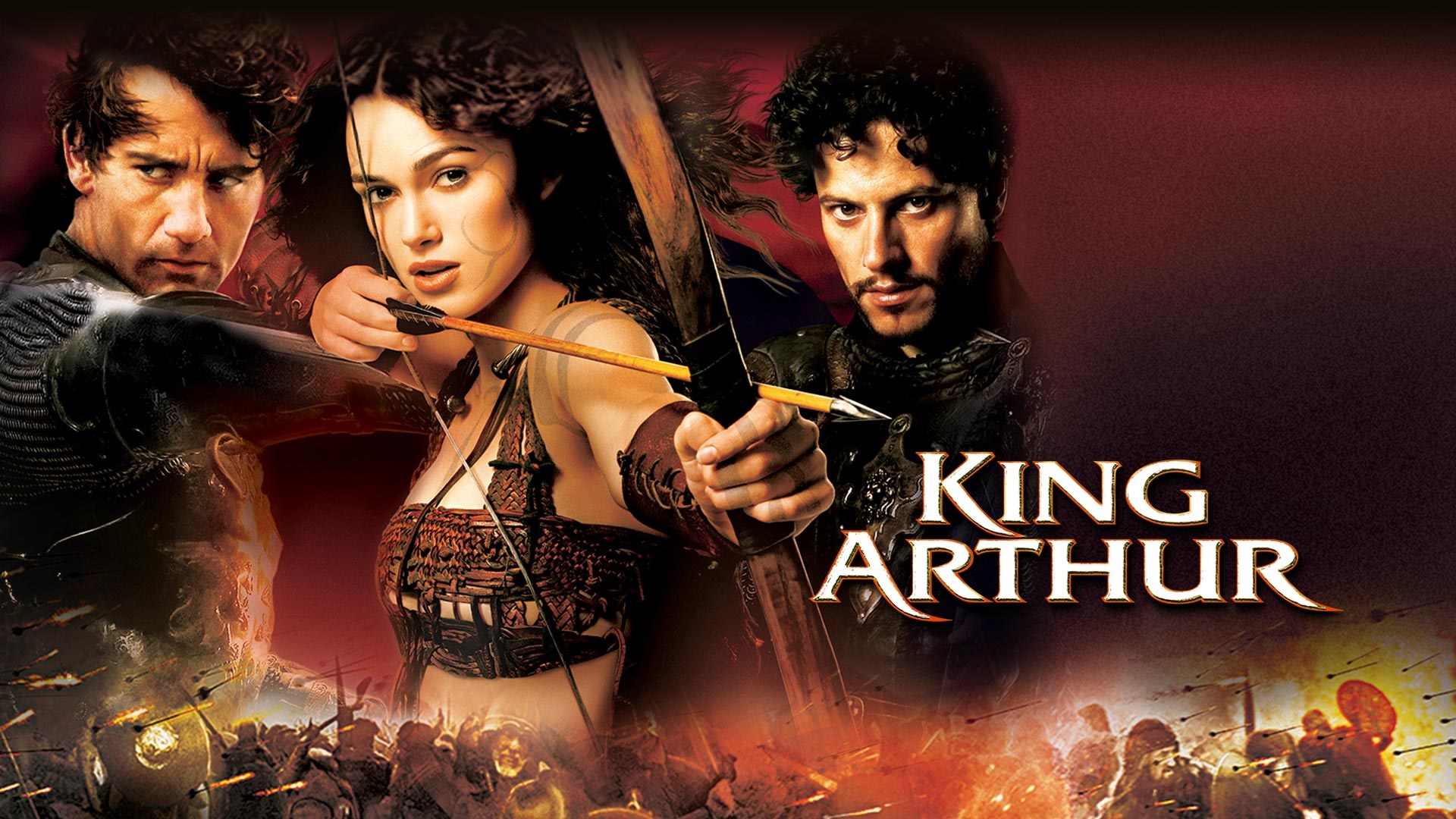“King Arthur” (2004)

Released in 2004, “King Arthur,” directed by Antoine Fuqua, is a revisionist take on the legendary tale of King Arthur and his Knights of the Round Table. Starring Clive Owen as Arthur, Keira Knightley as Guinevere, and Ioan Gruffudd as Lancelot, the film presents a gritty, historically grounded interpretation of Arthurian legend, diverging from the fantastical portrayals of previous adaptations. This essay explores the film’s narrative, character development, visual style, thematic depth, and overall impact, offering a comprehensive examination of this unique adaptation of a timeless story.
“King Arthur” reimagines the traditional Arthurian legend by setting it in a more historically plausible context, blending elements of historical fiction with legendary lore. The film begins in 467 AD, during the decline of the Roman Empire in Britain. Arthur, a Roman officer, is portrayed not as a mythical figure but as a skilled and battle-hardened leader who commands a group of Sarmatian knights. The film explores Arthur’s efforts to protect Britain from Saxon invasions, as well as his struggle to unite a fractured land.

The narrative unfolds as Arthur and his knights, who have served Rome faithfully, are ordered to undertake a final mission to rescue a Roman family from the invading Saxons. The mission takes them to the heart of the conflict, where they encounter formidable foes and navigate complex political landscapes. Alongside the familiar figures of Lancelot, Guinevere, and Merlin, the film introduces a darker, more realistic portrayal of the Arthurian legend, focusing on themes of loyalty, honor, and leadership.
The film’s character development is central to its narrative, offering a more nuanced portrayal of Arthur and his companions. Clive Owen’s portrayal of Arthur is grounded and rugged, reflecting a warrior’s fatigue and the burdens of leadership. Owen’s performance emphasizes Arthur’s humanity and internal conflicts, providing a fresh perspective on the legendary king.

Keira Knightley’s Guinevere is portrayed as a fierce and independent warrior, a departure from the traditional damsel-in-distress archetype. Knightley’s performance adds depth to Guinevere’s character, showcasing her strength and strategic acumen while exploring her complex relationship with Arthur.
Ioan Gruffudd’s Lancelot is depicted as a noble and skilled knight, whose loyalty and valor are central to the film’s plot. Gruffudd’s portrayal emphasizes Lancelot’s internal struggle with honor and duty, adding emotional complexity to his character.
The film also features strong supporting performances from actors such as Mads Mikkelsen as the Saxon leader Cerdic and Stellan Skarsgård as the treacherous Saxon warlord. Their portrayals contribute to the film’s exploration of conflict and power dynamics.
Antoine Fuqua’s direction, combined with cinematography by David Tattersall, creates a visually compelling and gritty depiction of the Arthurian world. The film’s aesthetic is characterized by its realistic portrayal of medieval life, with a focus on practical effects and historical accuracy. The battle scenes are intense and visceral, reflecting the brutal nature of the era.

The use of natural landscapes and historical settings enhances the film’s authenticity, immersing the audience in the harsh realities of medieval Britain. The film’s color palette, dominated by earthy tones and muted hues, reinforces its grounded approach and adds to the overall atmosphere of ruggedness and conflict.
“King Arthur” explores themes of honor, loyalty, and the burdens of leadership. The film’s portrayal of Arthur’s struggle to unite a fractured land and maintain his integrity in the face of personal and political challenges adds depth to the legendary figure. The film’s depiction of Guinevere and Lancelot as strong and independent characters reflects a modern sensibility, challenging traditional gender roles and adding complexity to their relationships.
The film’s impact lies in its revisionist approach to the Arthurian legend, offering a more historical and realistic interpretation while retaining elements of the traditional story. By focusing on the political and military aspects of Arthur’s reign, the film provides a fresh perspective on the legend, appealing to audiences interested in historical fiction and epic drama.

Upon its release, “King Arthur” received mixed reviews from critics but was praised for its ambitious approach and strong performances. The film’s attempt to ground the Arthurian legend in historical reality distinguished it from other adaptations and contributed to its unique position within the genre.
In conclusion, “King Arthur” (2004) stands as a noteworthy reimagining of the Arthurian legend, offering a gritty and realistic portrayal of a timeless tale. Antoine Fuqua’s direction, combined with strong performances and a focus on historical accuracy, provides a fresh perspective on the legendary king and his knights. The film’s exploration of themes such as honor, loyalty, and leadership ensures its place as a significant entry in the cinematic depiction of Arthurian lore.








